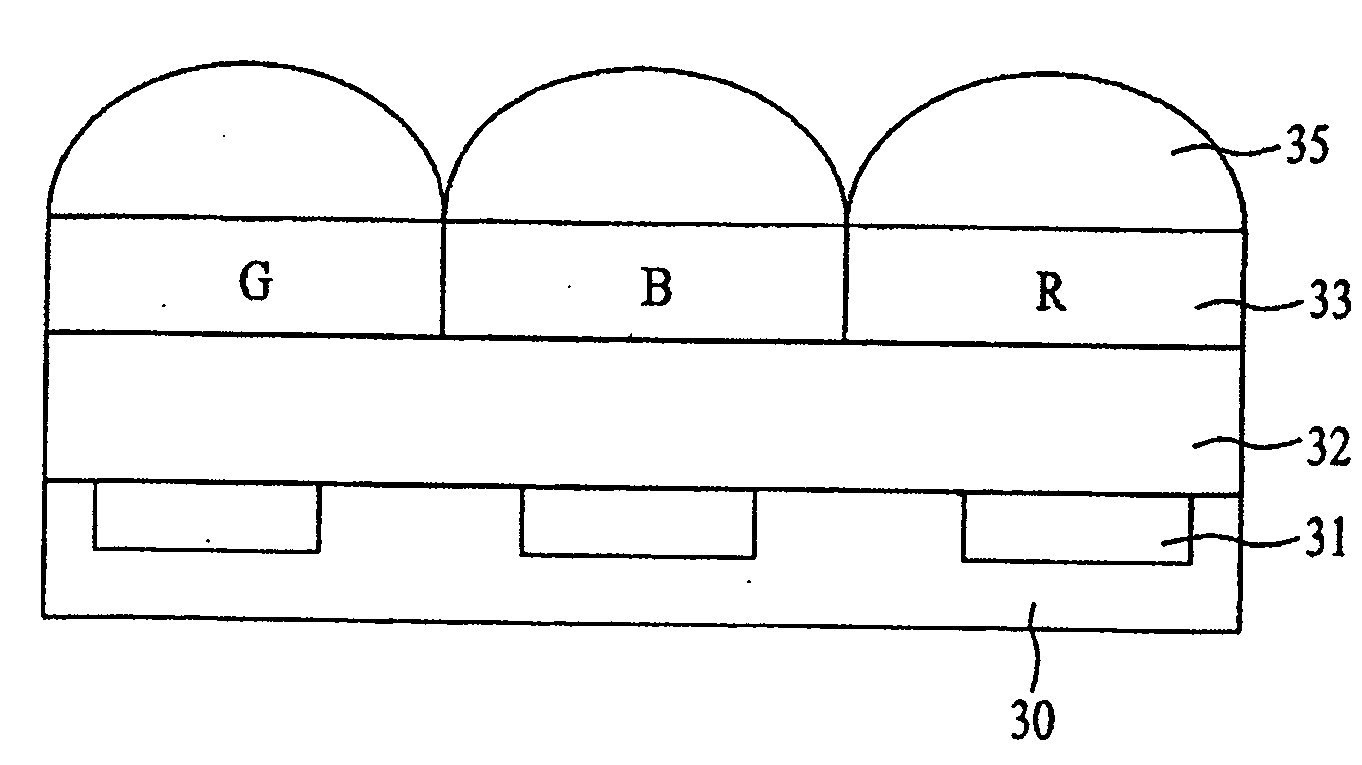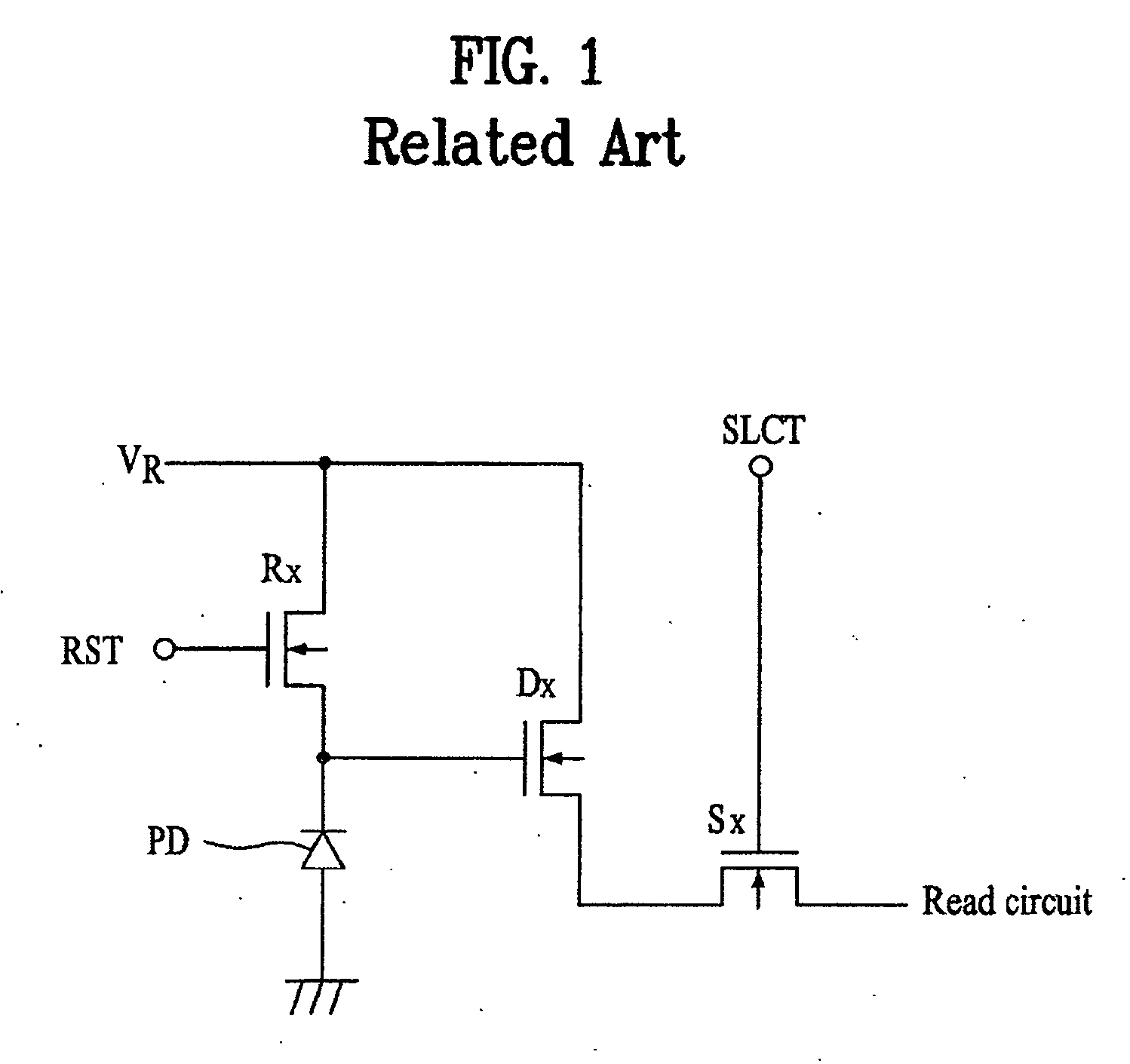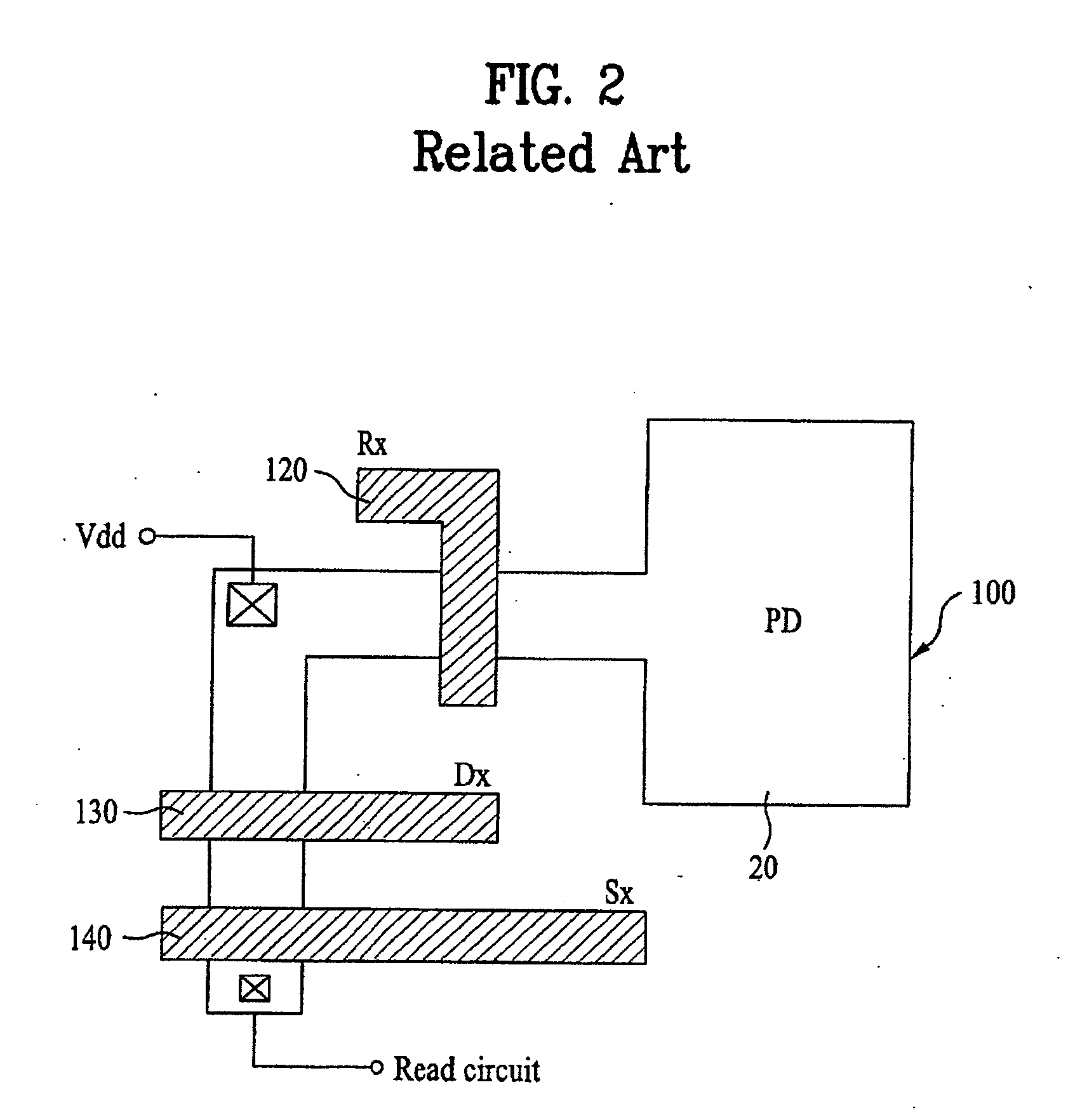CMOS image sensor and method for fabricating the same
a technology of image sensor and manufacturing method, which is applied in the field of image sensor, can solve the problems of complex fabrication process requiring multi-phase photo process, high power consumption, and complicated driving method, and achieve the effect of eliminating the thickness of the planarization layer and improving image characteristics
- Summary
- Abstract
- Description
- Claims
- Application Information
AI Technical Summary
Benefits of technology
Problems solved by technology
Method used
Image
Examples
Embodiment Construction
[0028] Reference will now be made in detail to embodiments of the present invention, examples of which are illustrated in the accompanying drawings. Wherever possible, like reference designations will be used throughout the drawings to refer to the same or similar parts.
[0029] An embodiment of the present invention will be described with reference to FIG. 4A-5C. As shown in FIG. 4A, a plurality of photodiodes 41, which may be in the form of a plurality of photo-gates, are formed at fixed intervals in a predetermined surface of a semiconductor substrate 40. Then, an insulating interlayer 42 of an oxide such as undoped silicate glass is formed on an entire surface of the semiconductor substrate 40 including the plurality of photodiodes 41. The insulating interlayer 42 may be formed as a multi-layered structure, including a light-shielding layer (not shown) for preventing light from reaching areas other than the photodiodes 41, and another insulating interlayer (not shown) formed on t...
PUM
 Login to View More
Login to View More Abstract
Description
Claims
Application Information
 Login to View More
Login to View More - R&D
- Intellectual Property
- Life Sciences
- Materials
- Tech Scout
- Unparalleled Data Quality
- Higher Quality Content
- 60% Fewer Hallucinations
Browse by: Latest US Patents, China's latest patents, Technical Efficacy Thesaurus, Application Domain, Technology Topic, Popular Technical Reports.
© 2025 PatSnap. All rights reserved.Legal|Privacy policy|Modern Slavery Act Transparency Statement|Sitemap|About US| Contact US: help@patsnap.com



